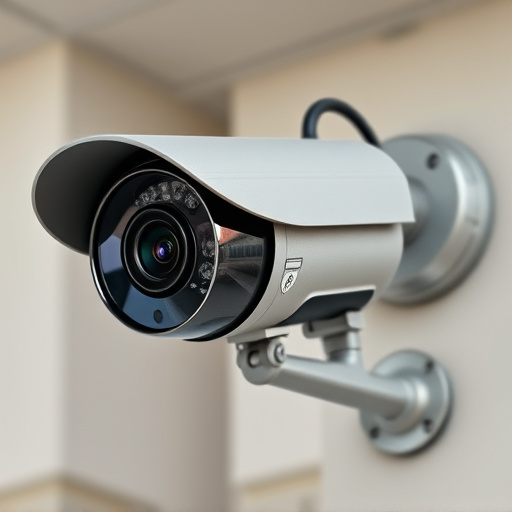In today's digital era, realistic fake cameras for business security are gaining popularity as an innovative deterrent. These visually convincing replicas blend seamlessly into surroundings, enhancing surveillance without attracting unnecessary attention. Crafted with advanced polymeric resins and meticulous craftsmanship, they mimic genuine equipment, providing durability and aesthetic appeal. Strategically placed, they create a false sense of security for intruders, combining physical and psychological barriers with technology like motion detection and analytics for comprehensive business protection.
In today’s digital era, enhancing business security with cameras is paramount. One innovative approach gaining traction is the deployment of realistic fake cameras, offering a discreet and effective solution. This article delves into the essential aspects of designing these convincing replicas, exploring how they can blend seamlessly into any environment. From understanding specific business needs to employing advanced materials and manufacturing techniques, we provide valuable insights for successful implementation, ensuring your security measures remain unseen yet highly effective.
- Understanding Business Security Camera Needs
- Design Principles for Realistic Fake Cameras
- Materials and Manufacturing Techniques
- Deployment Strategies for Effective Disguise
Understanding Business Security Camera Needs
In today’s digital era, business security is paramount, with camera systems serving as a crucial deterrent to potential threats. Understanding the specific needs of an organization is key when designing a robust security solution. For many businesses, the use of realistic fake cameras has become an innovative strategy to enhance overall security measures. These visually convincing replicas mimic real cameras, deterring would-be criminals while providing peace of mind.
By strategically placing these realistic fake cameras around premises, businesses can create the illusion of enhanced surveillance, potentially reducing crime and improving safety. This tactic is particularly useful for areas with high criminal activity or sensitive assets, as it adds an extra layer of protection without drawing unnecessary attention. In terms of design, these fake cameras must be meticulously crafted to match genuine models, ensuring they blend seamlessly into their surroundings.
Design Principles for Realistic Fake Cameras
When designing realistic fake cameras, or decoys, for business security purposes, several key principles come into play. The primary goal is to create a device that appears genuine but serves as a deterrence or distraction from actual surveillance equipment. One of the most important design elements is realism; the camera should mimic the appearance and behavior of real cameras as closely as possible. This includes replicating the physical dimensions, shape, and mounting methods used in common security setups.
Additionally, incorporating subtle discrepancies can make fake cameras more convincing. For instance, using slightly inferior materials or adding minor aesthetic flaws can give the impression that the device is a genuine but poorly maintained camera. Motion detection capabilities and realistic LED indicators further enhance their believability. These design principles aim to balance effectiveness in deterring potential criminals with maintaining an aesthetically pleasing environment for business operations.
Materials and Manufacturing Techniques
The materials and manufacturing techniques employed in creating realistic fake security cameras play a pivotal role in their effectiveness as deterrents. High-quality, lifelike replicas are crafted using advanced polymeric resins that mimic the appearance of traditional camera housings. These materials offer excellent durability, resistance to weather conditions, and a seamless finish that blends seamlessly with real surveillance equipment.
Manufacturing processes involve intricate molding techniques to reproduce the precise contours and textures of genuine security cameras. Skilled artisans then assemble these components, paying meticulous attention to detail. This meticulous craftsmanship ensures that fake cameras are not just visually identical but also function as intended, providing businesses with an efficient, cost-effective solution for enhancing security without the need for extensive hardware investments in real camera systems.
Deployment Strategies for Effective Disguise
Disguising security cameras is a clever tactic to deter potential criminals and enhance overall security. One effective strategy is to integrate realistic fake cameras into various environments, offering an invisible layer of protection for businesses. These fake cameras mimic the appearance and movement of genuine surveillance equipment, making them excellent deterrents without compromising aesthetics. For instance, placing highly detailed artificial cameras on poles or mounting them on ceilings can create a false sense of security for intruders.
When deploying realistic fake cameras, consider diverse placement strategies. This could involve positioning them in plain sight near high-value assets or entry points, or using subtle displays to monitor broader areas. Businesses should also leverage the power of technology by combining these visual deterrents with advanced analytics and notification systems. Realistic fake cameras for business serve as a multi-faceted security solution, providing both physical and psychological barriers to potential threats.
Realistic fake security cameras, also known as decoy cameras, offer an innovative and effective solution for enhancing business security. By understanding specific business needs, adhering to design principles that mimic genuine camera aesthetics, and employing strategic deployment techniques, businesses can deploy these realistic fake cameras as a powerful deterrent against potential threats. This article has explored the key aspects of successful integration, from material choices and manufacturing methods to optimal placement strategies, providing valuable insights for those looking to bolster their facility’s security in an inconspicuous yet impactful manner.
